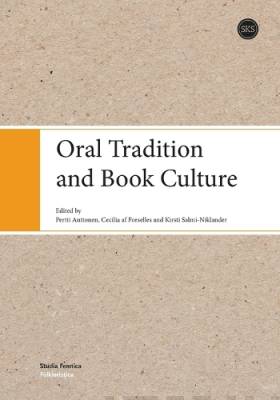Oral Tradition and Book Culture
Anttonen, Pertti; Forselles, Cecilia af; Salmi-Niklander, KirstiTuotetiedot
| Nimeke: | Oral Tradition and Book Culture | ||
| Tekijät: | Anttonen, Pertti (Toimittaja) Forselles, Cecilia af (Toimittaja) Salmi-Niklander, Kirsti (Toimittaja) |
||
| Tuotetunnus: | 9789518580075 | ||
| Tuotemuoto: | Pehmeäkantinen kirja | ||
| Saatavuus: | Toimitusaika 7-14 arkipäivää | ||
| Hinta: | 45,00 € (39,65 € alv 0 %) | ||
|
|||
| Kust. tuotetunnus: | 1356383 |
| Kustantaja: | Suomalaisen Kirjallisuuden Seura |
| Sarja: | Studia Fennica Folkloristica 24 |
| Painos: | 2018 |
| Julkaisuvuosi: | 2018 |
| Kieli: | englanti |
| Sivumäärä: | 173 |
| Tuoteryhmät: | Kirjallisuudentutkimus Kansatiede ja antropologia Studia Fennica Folkloristica Books in English |
| Kirjastoluokka: | 00.1 Kirjoitus |
| YSO - Yleinen suomalainen asiasanasto: | suullinen perinne, suullinen kulttuuri, kirjahistoria, kirjallinen kulttuuri |
| Avainsanat: | book history, folk tradition, Oral tradition, history of publishing, written culture |
A new interdisciplinary interest has risen to study interconnections between oral tradition and book culture. In addition to the use and dissemination of printed books, newspapers etc., book culture denotes manuscript media and the circulation of written documents of oral tradition in and through the archive, into published collections. Book culture also intertwines the process of framing and defining oral genres with literary interests and ideologies.
The present volume is highly relevant to anyone interested in oral cultures and their relationship to the culture of writing and publishing. The questions discussed include the following: How have printing and book publishing set terms for oral tradition scholarship? How have the practices of reading affected the circulation of oral traditions? Which books and publishing projects have played a key role in this and how? How have the written representations of oral traditions, as well as the roles of editors and publishers, introduced authorship to materials customarily regarded as anonymous and collective?
The present volume is highly relevant to anyone interested in oral cultures and their relationship to the culture of writing and publishing. The questions discussed include the following: How have printing and book publishing set terms for oral tradition scholarship? How have the practices of reading affected the circulation of oral traditions? Which books and publishing projects have played a key role in this and how? How have the written representations of oral traditions, as well as the roles of editors and publishers, introduced authorship to materials customarily regarded as anonymous and collective?





